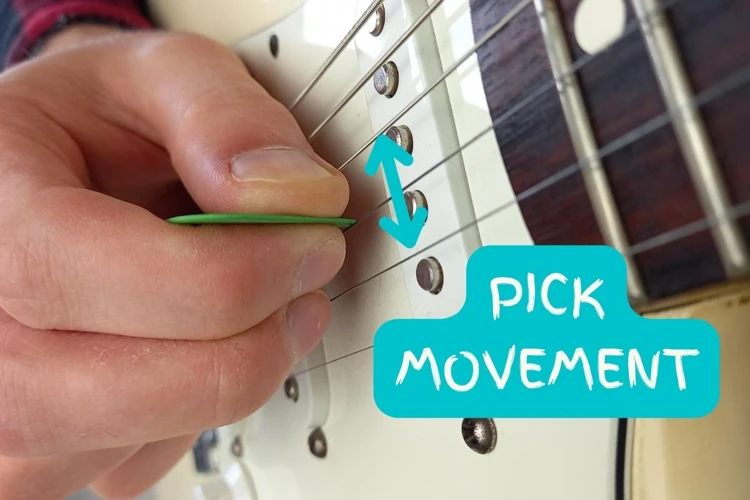Chicken picking is a popular guitar technique that involves a combination of picking and muting to create a unique and dynamic sound. It is commonly used in country, rock, and blues music to add flair and speed to guitar solos. While chicken picking can be an impressive technique when executed correctly, there are common mistakes that many electric guitarists make when trying to master this style. In this article, we will explore some of the most common mistakes electric guitarists make when chicken picking and how to avoid them.
Not Using the Correct Pick
One of the most common mistakes electric guitarists make when chicken picking is using the wrong pick. The pick you use can have a significant impact on the sound and feel of your playing. When chicken picking, it is essential to use a thin pick to allow for quick and precise picking movements. A thin pick will also help you achieve the crisp and percussive sound that is characteristic of chicken picking. Using a thick pick can make it challenging to execute the fast picking motions required for chicken picking and can result in a muddy and dull sound.
To avoid this mistake, experiment with different pick thicknesses to find the one that works best for you when chicken picking. Generally, a pick with a thickness between 0.5mm and 0.7mm is ideal for chicken picking, but ultimately, the best pick for you will depend on your playing style and personal preference.
Incorrect Hand Positioning
Another common mistake electric guitarists make when chicken picking is incorrect hand positioning. Proper hand positioning is crucial for achieving speed, accuracy, and control when chicken picking. Many guitarists struggle with finding the right balance between picking and muting strings with their picking hand.
When chicken picking, your picking hand should be positioned close to the bridge of the guitar to produce a bright and twangy sound. Your palm should lightly rest on the strings to mute unwanted noise while allowing the picked notes to ring out clearly. Additionally, your picking hand fingers should be relaxed and ready to execute quick picking movements.
To avoid this mistake, practice chicken picking slowly and pay close attention to your picking hand positioning. Focus on keeping your hand close to the bridge, using your palm to mute strings effectively, and keeping your fingers relaxed and nimble. With consistent practice and attention to detail, you can improve your hand positioning and enhance your chicken picking technique.
Inconsistent Picking Dynamics
One of the hallmarks of chicken picking is its dynamic range, which involves varying the intensity of your picking to create contrast and interest in your playing. However, a common mistake many electric guitarists make when chicken picking is inconsistent picking dynamics. Inconsistent picking dynamics can result in a flat and monotonous sound that lacks the characteristic punch and expressiveness of chicken picking.
To improve your picking dynamics when chicken picking, focus on varying the intensity of your picking hand to accentuate certain notes and create a more dynamic and engaging performance. Practice playing passages with a combination of soft and loud picking to develop control over your picking dynamics. Additionally, experiment with using different pick angles and attack techniques to further enhance your picking dynamics.
Overlooking String Muting
String muting is an essential aspect of chicken picking that is often overlooked by electric guitarists. Effective string muting is crucial for controlling unwanted noise and ensuring that only the intended notes ring out clearly. Many guitarists struggle with string muting when chicken picking, resulting in a messy and cluttered sound.
When chicken picking, it is important to use a combination of palm muting and fret-hand muting to control string noise effectively. Your picking hand palm should lightly rest on the strings near the bridge to mute unwanted string vibrations, while your fret-hand fingers should mute strings that are not being played. By mastering string muting techniques, you can achieve a cleaner and more articulate chicken picking sound.
To improve your string muting skills, practice playing simple chicken picking exercises slowly and focus on muting strings that are not in use. Pay attention to the level of pressure and positioning of your muting hand to achieve optimal string control. With consistent practice, you can develop your string muting abilities and enhance the clarity and precision of your chicken picking technique.
Ignoring Proper Timing and Rhythm
Timing and rhythm are essential elements of chicken picking that can make or break your performance. Many electric guitarists make the mistake of ignoring proper timing and rhythm when practicing chicken picking, leading to a disjointed and uneven sound. Chicken picking requires a precise and steady sense of timing to execute the rapid-fire picking movements accurately.
To improve your timing and rhythm when chicken picking, practice with a metronome to develop a solid sense of timing and groove. Start by playing simple chicken picking patterns at a slow tempo and gradually increase the speed as you become more comfortable. Focus on locking in with the metronome and maintaining a consistent rhythm throughout your playing.
Additionally, pay attention to the subdivision of beats and accents in your chicken picking patterns to create a more dynamic and engaging performance. Experiment with syncopated rhythms and off-beat accents to add interest and complexity to your playing. By honing your timing and rhythm skills, you can elevate your chicken picking technique and deliver more compelling performances.
Looking to improve your electric guitar chicken picking technique? Avoid common mistakes by checking out our articles on flatpicking on acoustic guitar, effects pedals for country electric guitar playing, hybrid picking in country guitar, and right techniques for chicken picking. Master your skills and elevate your playing with these valuable resources!
Conclusion
In conclusion, chicken picking is a versatile and exciting guitar technique that can add depth and excitement to your playing. However, mastering chicken picking requires attention to detail and consistent practice to avoid common mistakes that can hinder your progress. By using the correct pick, maintaining proper hand positioning, focusing on picking dynamics, mastering string muting, and honing your timing and rhythm skills, you can enhance your chicken picking technique and elevate your playing to new heights. Remember, mastering chicken picking takes time and dedication, so be patient with yourself as you work through these common mistakes and strive for improvement in your playing. With perseverance and a commitment to excellence, you can unlock the full potential of chicken picking and take your electric guitar playing to the next level.


